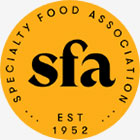

Breaking down the two most widely-used theories for understanding human psychology and what they mean for brand building.
Many agencies’ brand-building philosophies utilize Abraham Maslow’s Hierarchy of Needs and Charles O. Russell’s Theory of Congruence in their strategy work, overtly or subtly. These two theories, revolving around logic and human psychology, converge and diverge throughout the early stages of consumer discovery. While Maslow’s theory of human motivation focuses on human needs, Russell’s philosophy emphasizes the importance of logical reasoning and critical thinking. Wielding both can help CPG food brands create more effective messaging and connect emotionally with their audience.
Maslow’s ‘Hierarchy of Needs‘
Maslow’s theory of human motivation, often called “Maslow’s hierarchy of needs,” suggests that humans have various desires that they strive to fulfill, each in order. The hierarchy platform is basic physiological needs such as food, water, and shelter. As one moves up, other desires, such as safety, love and belonging, esteem, and self-actualization, come into play.
Understanding what needs your target audience has at each level, particularly how far along they are in their journey of self-actualization, can influence the messages that appeal to those needs. For example, your better-for-you CPG food brand may be aspirational if your consumer is evolving their self-esteem through a health and fitness journey. You can speak to this need for belonging to a community or results of self-esteem with an inspiring and knowing tone of voice.
Tapping into their “level” by making an intelligent connection will draw in the ideal consumer, so it’s good to analyze your brand and where it may meet the needs within Maslow’s hierarchy. “I’d Like to Buy the World a Coke” is the brand’s most successful campaign because it spoke directly to the desire for love and belonging to a generation experiencing similar “needs.”
Russell’s ‘Theory of Congruence’
On the other hand, Bertrand Russell’s philosophy emphasizes critical thinking and logical reasoning. Russell believed logical reasoning and rational thought were essential for making informed decisions and solving complex problems. He also believed humans are prone to irrational decisions due to emotions, biases, and faulty reasoning.
According to this theory, people are more comfortable engaging with a product or an environment that maintains consistency. Successful marketing and branding thrive on this theory; the more a brand can create a universal world, the more comfortable the consumer will be with the brand (aka LOYAL). From a consistent or notable color palette to a distinct tone of voice, every touchpoint with the brand should maintain some level of consistency, then flex within the appropriate environment (ex: on-shelf may need to be more claim driven where social can be a little more irreverent, but neither should conflict).
The trick is to find the balance between disruption and mass appeal for any brand. According to Russell, the barrier to entry is more significant if a consumer finds something too unfamiliar. However, if you can also tap into the emotional hierarchy from Maslow’s theory, you can bridge the gap in your messaging. Your brand can feel ‘the right amount of familiar’ while making a more profound, unique emotional connection with messaging.
Starting with a basic understanding of these philosophies will help any brand builder get closer to the hearts and minds of their consumer (and yourself!), so crack those books.
Interested in the role of emotions for brand building? Check out this article.
For more on the basic psychology behind Maslow and Russell’s theories, https://www.simplypsychology.org/ does a decent job of toplining similar topics.









